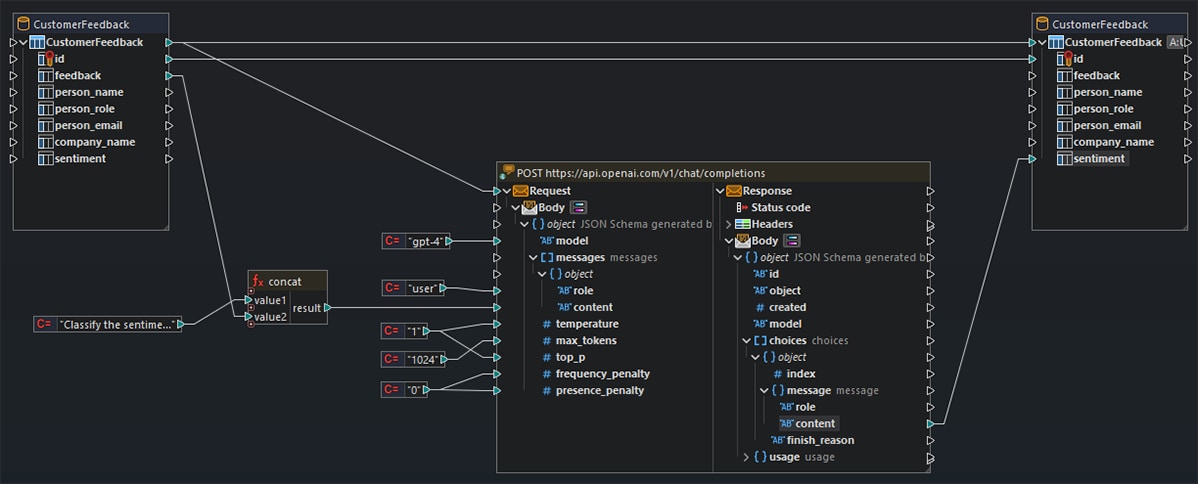In addition to calls to Shopify/GraphQL APIs, MapForce supports calling SOAP and REST web services directly from within a mapping. You can insert a Web service call into a mapping and supply input parameters and username/password or other authentication. Connect output components to the Web service to pass the result to another component or write it to a file.
MapForce also supports generic HTTP Web services that typically carry custom request or response structures in the message body. MapForce supports both JSON or XML data in the request or response body, allowing you to call virtually any HTTP Web service that requires or returns XML or JSON structures.

Manual definition of settings in the Web Service Call definition dialog allows developers to define settings based on a template URL. This is a convenient step when developers test and refine Web service calls in a Web browser window, since they can copy the URL from the browser to become the template.
Looking for a real world example? Here is a detailed tutorial on Web Services Data Integration.
MapForce supports authentication based on the WS-Security (Web Services Security) standard via client certificates and calling Web services via HTTPS. The parameters needed to establish secure communication are defined as part of the data mapping so execution is automated.
OAuth 2.0 is an open standard for authorization that provides a way to provide client applications secure, delegated access to web resources using access tokens rather than passwords. MapForce includes support for calling Web services that require OAuth 2.0 authorization.
This is enabled in the Credentials Manager (opened by right clicking in an active mapping project). OAuth authorization details can be transferred to other execution environments such as MapForce Server and FlowForce Server with the help of credential objects.





